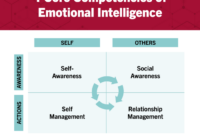Business intelligence visualization is the key to unlocking the full potential of your data, transforming raw numbers into compelling visuals that empower you to make informed decisions and drive business success. It’s the art of presenting complex data in a way that’s easy to understand, making it an essential tool for businesses of all sizes.
From interactive dashboards to stunning infographics, visualization tools provide a powerful way to communicate insights, identify trends, and uncover hidden opportunities. By leveraging the power of visualization, you can gain a deeper understanding of your data, make better decisions, and ultimately achieve your business goals.
Business Intelligence Visualization
Business intelligence (BI) visualization is the graphical representation of data and information to make it easier to understand and analyze. It plays a crucial role in BI by transforming complex data into visual formats that enable users to quickly identify patterns, trends, and insights.
Business intelligence visualization is the key to unlocking actionable insights from data. For more in-depth information, check out blog.dosenpintar.com business intelligence. With the right visualization tools, you can easily spot trends, identify patterns, and make informed decisions that drive business growth.
Common BI visualization types include:
- Charts (e.g., bar charts, line charts, pie charts)
- Graphs (e.g., scatter plots, histograms)
- Maps
- Dashboards
Benefits of BI Visualization
BI visualization offers numerous advantages, including:
- Improved data understanding: Visualizations make data more accessible and easier to comprehend, allowing users to grasp complex information at a glance.
- Enhanced decision-making: Visualizations provide a clear and concise representation of data, enabling users to make informed decisions based on data-driven insights.
Types of BI Visualization
| Type | Description | Examples |
|---|---|---|
| Bar Chart | Displays data as a series of vertical or horizontal bars, with each bar representing a category or value. | Sales by product, customer demographics |
| Line Chart | Plots data points connected by lines, showing trends or changes over time. | Stock prices, website traffic |
| Pie Chart | Divides a circle into segments, with each segment representing a proportion of the whole. | Market share, budget allocation |
| Scatter Plot | Plots data points as dots on a graph, showing relationships between variables. | Customer satisfaction vs. product price |
| Histogram | Displays the distribution of data, showing the frequency of values within a range. | Customer age, product sales |
Best Practices for BI Visualization, Business intelligence visualization
- Prepare data carefully: Ensure data is clean, accurate, and relevant to the visualization.
- Select the right chart type: Choose the chart type that best suits the data and the insights you want to convey.
- Follow design principles: Use clear colors, fonts, and layout to enhance readability and comprehension.
Tools and Technologies for BI Visualization

Various tools and technologies are available for creating BI visualizations, including:
- Tableau
- Power BI
- Google Data Studio
- QlikView
These tools offer features such as data connectivity, drag-and-drop functionality, and interactive visualizations.
Case Studies and Examples
| Company | Challenge | Solution | Outcome |
|---|---|---|---|
| Amazon | Difficulty understanding customer purchase patterns | Implemented a data visualization platform to track customer behavior | Increased sales by 15% through targeted marketing campaigns |
| Nike | Needed to improve supply chain efficiency | Developed a dashboard visualizing inventory levels and production schedules | Reduced lead times by 20% and improved customer satisfaction |
Future Trends in BI Visualization

Emerging trends in BI visualization include:
- Integration of artificial intelligence (AI) and machine learning (ML): Automating data analysis and generating insights.
- Interactive and immersive visualizations: Enabling users to explore data in 3D and other immersive environments.
Summary: Business Intelligence Visualization
In the rapidly evolving business landscape, data visualization has become an indispensable tool for organizations seeking to gain a competitive edge. By embracing the power of visual storytelling, businesses can unlock the full potential of their data, drive informed decision-making, and achieve exceptional results.
Business intelligence visualization helps you see your data in a way that makes it easy to understand and act on. Looker business intelligence is a great tool for creating interactive data visualizations that can help you get the most out of your data.
With Looker, you can create visualizations that are easy to understand and share, so you can make better decisions for your business.
FAQ Resource
What are the benefits of using business intelligence visualization?
Visualization helps improve data understanding, enhances decision-making, facilitates communication, and enables data-driven decision-making.
What are some common types of business intelligence visualizations?
Common types include charts (bar, line, pie), graphs, maps, dashboards, and infographics.
How can I choose the right business intelligence visualization tool?
Business intelligence visualization tools can help you make sense of complex data, but if you’re just starting out as a business intelligence analyst, you may be wondering how much you can expect to earn. According to recent data, the average business intelligence analyst entry level salary is around $60,000.
With experience, you can expect to earn even more. Business intelligence visualization tools can help you get started in this field and increase your earning potential.
Consider factors such as data size, visualization types needed, ease of use, integration capabilities, and cost.




